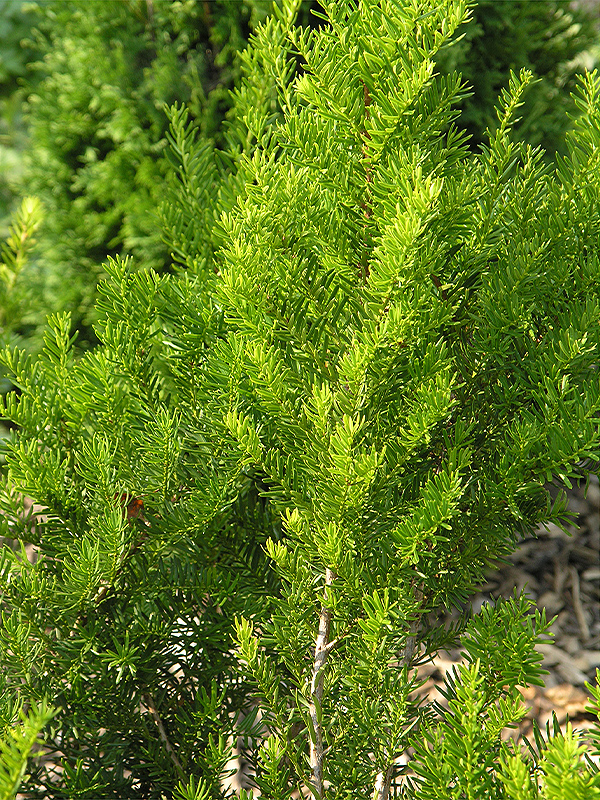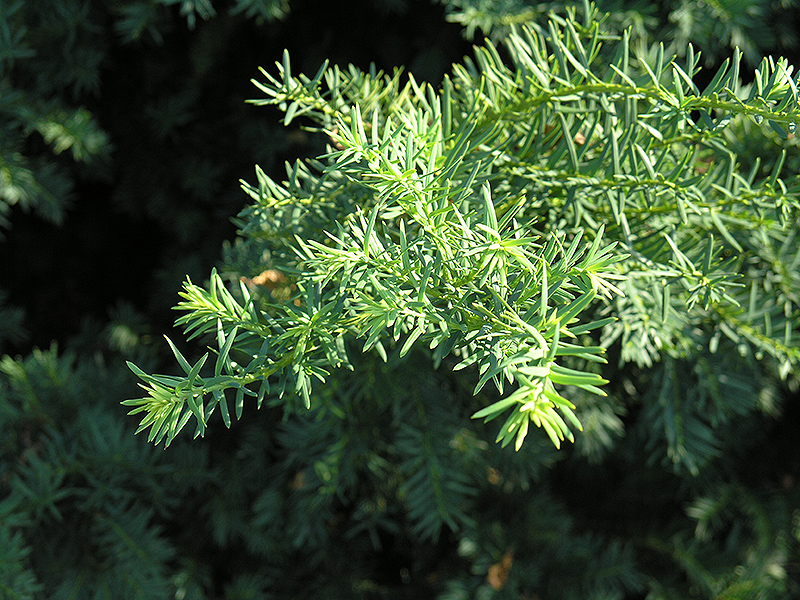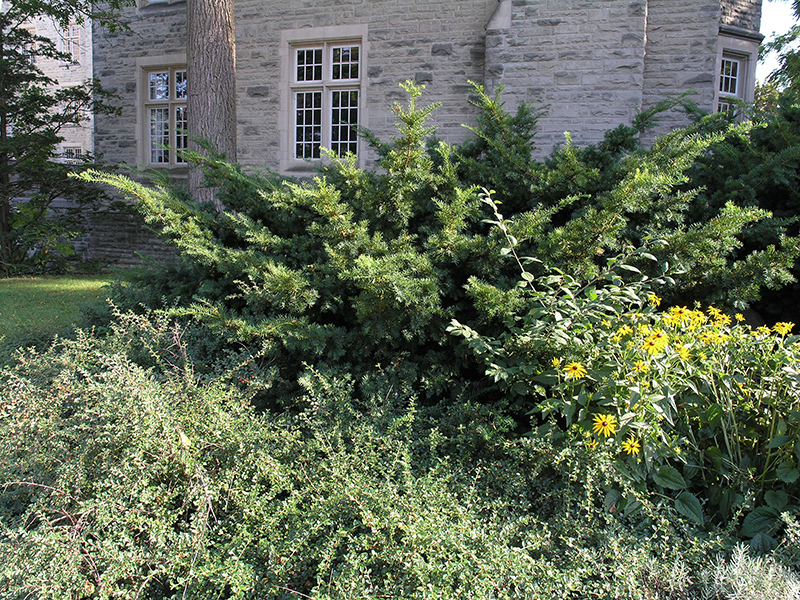
Woody > Taxus > Taxus cuspidata > Taxus cuspidata 'Expansa'
Taxus cuspidata
'Expansa'
Spreading Japanese Yew
Mike's
Opinion


"
Known for its wide spreading form, this evergreen shrub is perfect for filling large gaps in your garden. It can be planted out in the open, or under taller trees; as it grows well in either full sun or full shade. This plant has no known pest or disease problems; however it can be toxic if it is ingested by domestic animals. Mulching in winter is suggested in colder climates. Both male and female versions of this plant can be purchased.
Michael Pascoe, NDP., ODH., CLT., MSc. (Plant Conservation)
"
| Family |
| Taxaceae |
| Genus |
| Taxus |
| Species |
| cuspidata |
| Cultivar |
| 'Expansa' |
| Category |
| Woody |
| Type |
| Shrub (evergreen) |
| Pronunciation |
| USDA Hardiness Zone |
| 4B |
| Canadian Hardiness Zone |
| 4 |
| Temperature (°C) |
| -35 |
| Temperature (°F) |
| -30 |
| Height |
| 2 m |
| Spread |
| 3.5–4 m |
Photographs
Description and Growing Information
Flowering Period
| General Description |
| T. cuspidata ‘Expansa’ is a multi-stemmed evergreen shrub that branches at 45–60° from the base and has a very wide, spreading form. |
| Landscape |
| This shrub is used for grouping or massing; hedging; and makes an excellent groundcover. |
| Cultivation |
| Prefers sandy loam to clay loam soil. Requires good drainage because the roots are not tolerant of wet soil. |
| Shape |
| Rounded body with an open vase-shaped center. |
| Growth |
| Medium |
| ID Characteristic |
| This plant is anywhere from 1.5–2 times wider than it is tall, and has dense, deep green foliage. |
| Pests |
| None of note. |
| Habitat |
| Horticultural origin. |
| Bark/Stem Description |
| Smooth, brown bark; not often seen through the dense foliage. |
| Flower/Leaf Bud Description |
| Brown, overlapping, ovoid scale like buds. |
| Leaf Description |
| Small needle like foliage, ranging from 2–3 cm long, densely covering each branch on all sides. |
| Flower Description |
| Many small, green, dioecious flowers form on last year's wood. |
| Fruit Description |
| Small, fleshy red berries (arial); oval in shape. |
| Colour Description |
| New foliage is bright green, changing to a deep green when mature. The undersides of the needles are generally paler. |
| Texture Description |
| Medium waxy texture. |
| Notable Specimens |
| The Sherwood Fox Arboretum at the University of Western Ontario, London, Ontario, Canada. |


